TECHNOLOGY
THINK GLOBAL, ACT LOCAL
Adelaide is the new home for a multi-billion dollar technology giant
With 500,000 employees serving clients in more than 120 countries, technology and services giant Accenture knows what it takes to maintain a successful business in a competitive market – think globally but act locally. This is why the US-listed Fortune Global 500 company, which last year reported revenues of $US43.2 billion, has turned its focus on Adelaide for the next phase in its business strategy, looking to create 2000 jobs over the next five years estimated to add $1 billion to the South Australian economy.
It’s a huge coup and one that reflects South Australia’s growing international reputation as the place for technology, innovation and entrepreneurship. “There’s a tremendous match to South Australia and that’s why we were so excited about the move,” says Scott Hahn, Accenture’s senior managing director, ANZ technology. “The best value we bring for our clients is when we have the scale of a global company but can be very relevant with skills locally across Australia and New Zealand. For a long time we have been looking at how we get more talent locally, how we are more available to our clients in all the major cities across Australia and New Zealand: we started looking at Adelaide with that in mind.
“We wanted to add Accenture’s name to the list of local companies that are providing IT capability in SA. We have already started moving several of our ANZ individuals with backgrounds in capability in aerospace and defence, and are going to load up on industry skills and make Adelaide our aerospace and defence hub. But also we want to use Adelaide as a hub to service our other customers across Australia with the talent we’re building there.”
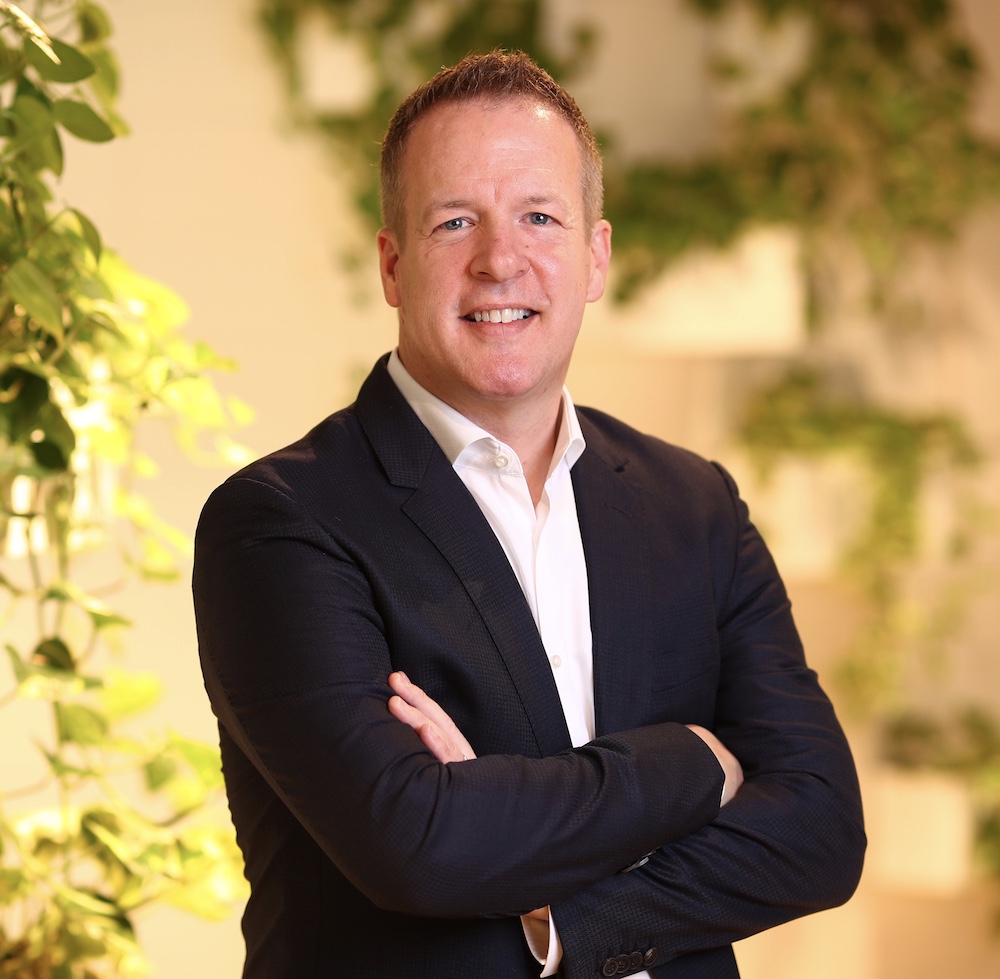
Having recruited more than 100 staff, the company already has its feet firmly under the table and is on track for future jobs growth. “We’re looking at entry-level to executive-level jobs across multiple areas,” Hahn says. “In terms of advanced technologies, it’s primarily around our platforms business: we have all kinds of clients we serve through SAP and Oracle, AWS, Azure, Google or Splunk – you name the platform, we have tens of ecosystem partners we deal with.
“But there are also opportunities for people with basic technical skills such as Java, Oracle or SAP platforms – those types of skillsets are people we can use right away.
“We see Adelaide as an extension of our cyber fusion centre in Sydney. We have market-leading cyber security capability at Accenture that we have home grown, as well as through a couple of acquisitions, and we’re going to be putting some of that cyber capability with the local aerospace and defence sectors, as well as some financial services customers. We want to have Adelaide be a hub for application security, threat intelligence, compliance and cyber-related capabilities.”
The past few months have created a greater demand for Accenture’s services – good news for South Australian jobseekers. “You pick any company of ours or any client within Australia and, especially where digital information is concerned, everyone is looking at their three-to-five-year plans and trying to compress that into three months,” Hahn says. “That’s where Accenture comes in – we help our clients with large-scale change initiatives and capability uplift.
We anticipate that, over the next three-to-five years, a lot of our clients and the global market in general that might have a 20 per cent footprint in cloud today will have an 80 per cent footprint – and that can be risky. So we want to make sure we’re combining technical know-how with experience, whether locally or globally.
“We’re terribly excited about this. We’re deeply appreciative of the partnership with the South Australian Government, we’re excited about access to local talent and we’re off to a great start already.”
BUSINESS
MOVE TO THE COUNTRY
With the best in local resources, it’s little wonder South Australia’s regional producers are making headlines around the world
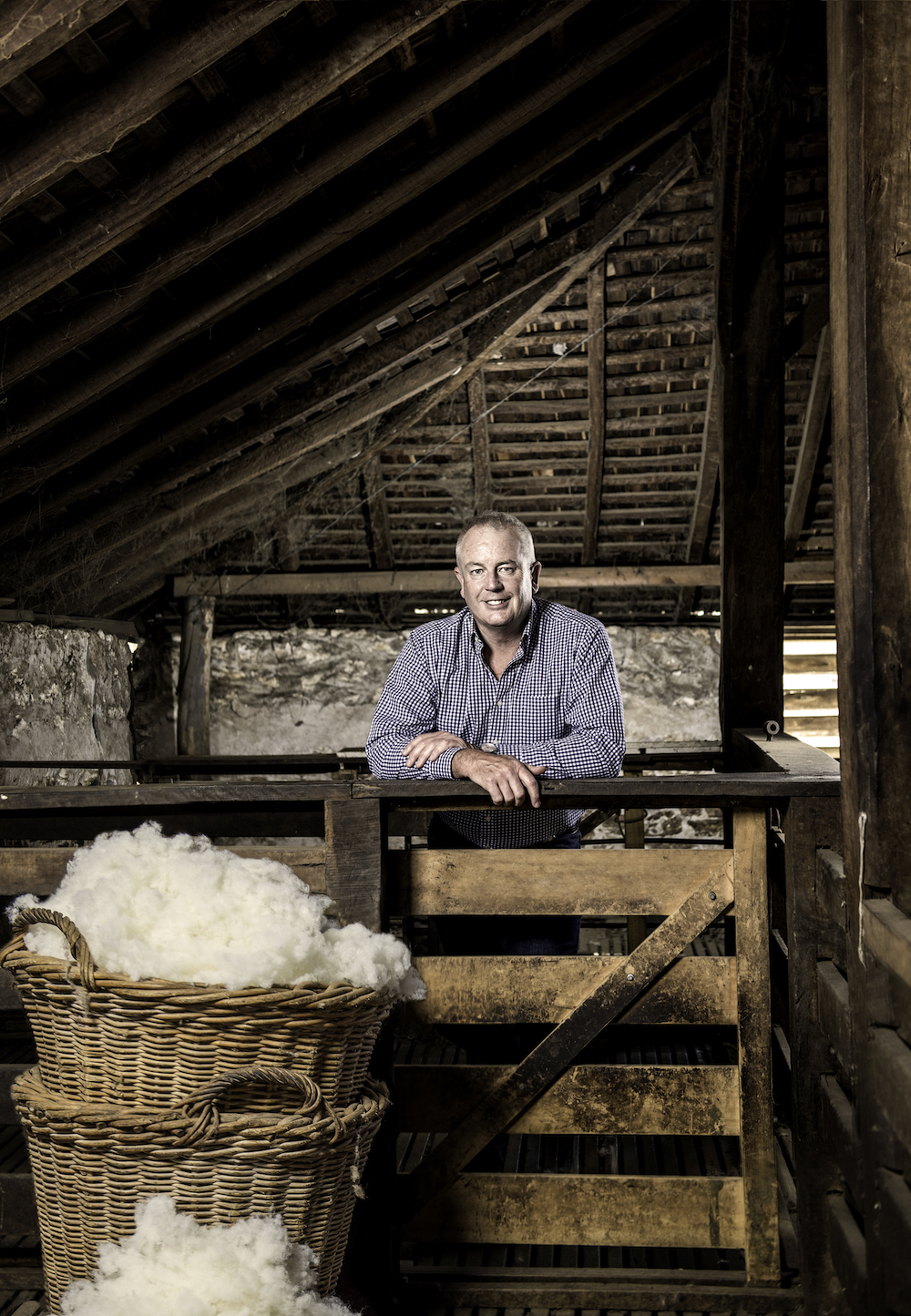 MINI JUMBUK – NARACOORTE
MINI JUMBUK – NARACOORTE
It began with small souvenir sheep, but the hard-working staff of Mini Jumbuk have parlayed the processing of South Australia’s best wool to become a leading brand among Australia’s wool bedding suppliers.
The company, which began as a cottage industry in Naracoorte in 1975, has cleaved to its regional roots to become a business success and employer of choice, surviving the worst of the COVID-19 pandemic to come out stronger on the other side.
“We’ve stayed true to wool and we’ve stayed in Naracoorte on the Limestone Coast,” says Mini Jumbuk managing director Darren Turner. “If we had a choice of moving, we would stay here. We had manufacturing operations in Melbourne (a joint venture for 15 years) but we decided to relocate to SA when our lease ran out.”
Fifty people are employed in Naracoorte and 12 in an Adelaide-based plant at Dry Creek, all taking pride in the woollen quilts, underlays, mattress toppers, pillows and more they help manufacture for major retailers, including Myer, David Jones, Adairs and Harris Scarfe.
Turner says operating in a region has strong benefits, particularly around creating a workplace culture and sense of community.
“We give back to the community and our staff give back to the company,” he says. “A lot of the staff have been with us for 10 to 20 years, as well as new staff that come along. It’s important that you are a company of choice for people to work for.”
Operating in a town with almost zero unemployment, Mini Jumbuk has a workforce that is about 80 per cent female. It has aligned shift times with the 3.30pm school pickup and believes in consulting with customers and staffing on new products.
Looking ahead, the company is partnering with selected Limestone Coast farmers to launch a new range called the Limestone Coast Wool Range in February 2021. “We are pretty proud of the region – we take it from bale to bed,” Turner says.
CLEAN SEAS – PORT LINCOLN
From bluefin tuna to yellowtail kingfish, Clean Seas is a South Australian company that has dedicated itself to the farming and sale of high-value, premium quality fish in the pristine waters of the Spencer Gulf.
It has continually challenged what the industry thought was possible, setting up fish farms in the blue waters off its base in Port Lincoln and, through its own research, closing the life cycle on tuna breeding in the first instance, from broodstock to adult fish ready for harvesting.
The work of the company, listed on the ASX in 2005, means Clean Seas has the intellectual property rights to breed and grow out tuna, kingfish, snapper and mulloway. The focus these days is kingfish, creating a farming process and premium-grade end product that has won it current Business SA Exporter of the Year status and many food awards. The company has expanded its markets beyond Europe to North America and China, and introduced retail outlets to its previous list of high-end, Michelin-star customers.
Freezing product is key. “We use liquid nitrogen and a super freezing technology we call Sensory Fresh – it’s usually reserved for berries and fruit, where the texture of the product is important,” acting chief executive Rob Gratin says. “It means we can send product by sea but still send it at premium quality, where someone can thaw it and eat it raw. It’s a way of getting sashimi-grade kingfish to markets around the world, even though the planes aren’t flying.”
Clean Seas is also working to expand its regional operations further north in Spencer Gulf, the natural home of the kingfish. “We are very proud of our Spencer Gulf heritage and operations,” Gratin says. “The majority of our 70 employees are employed here – we are heavily invested in the region.”
It plans to open more fish farms 5km offshore from Whyalla and work with the local high school to support the school’s aquaculture training program. “We are working on a solar farm at Whyalla to produce all of our electricity in a sustainable way, which will create yet more jobs on the gulf,” Gratin says. “As a company we are sponsoring the formation of the industry up there. The Spencer Gulf connection is intrinsically important – it underpins the quality of the product we are able to grow.”
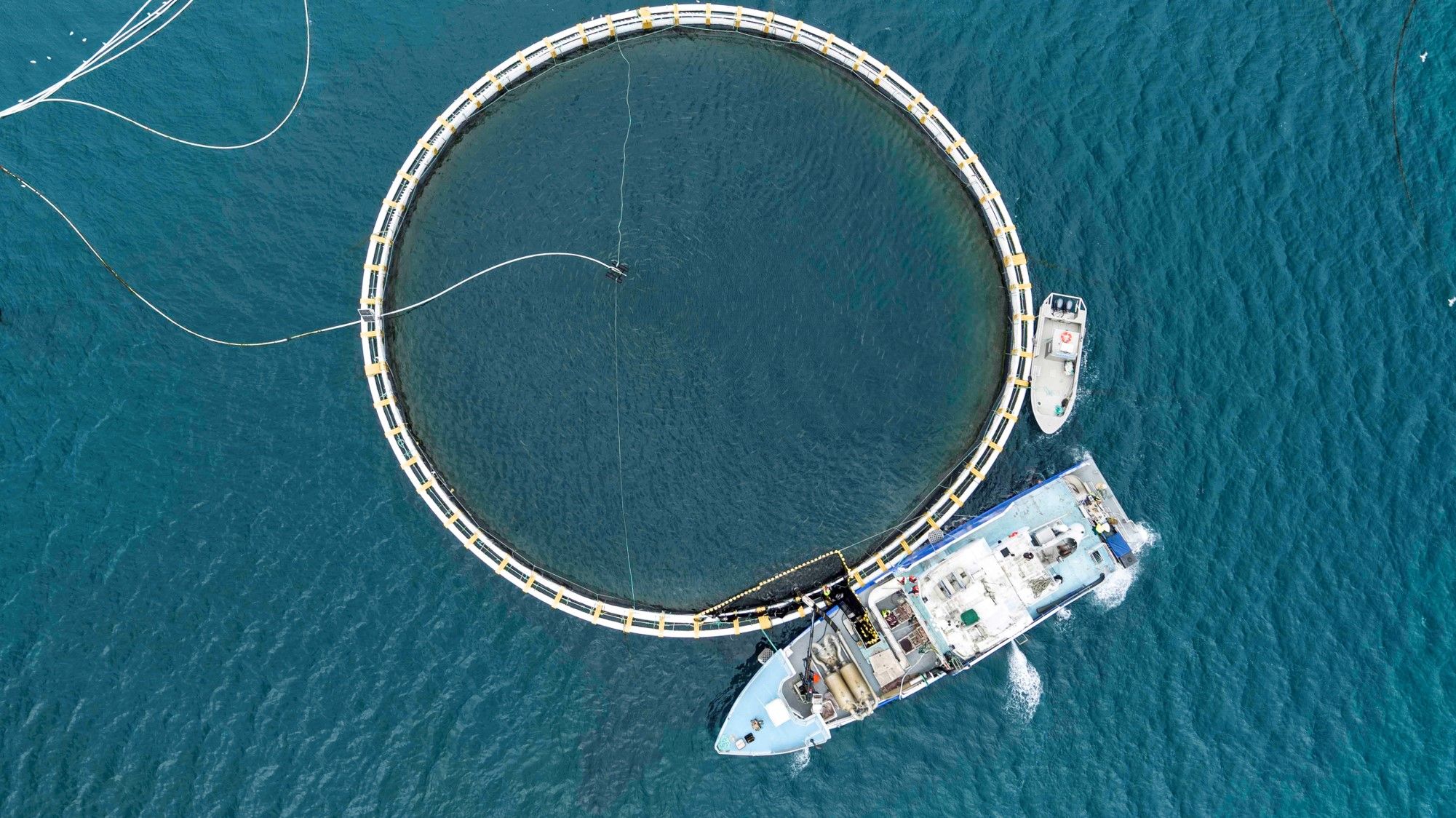
PYE GROUP – Murray Mallee
The Pye family has been growing premium produce for generations, building from a small one-man concern in New Zealand to become one of the largest suppliers of potatoes, carrots and onions to Australia from its regional base at Parilla.
Marketing manager Renee Pye tracks the origins of the horticulture company back to her grandfather, Allen Pye, chosen by McCain Foods to begin growing potatoes for them in Australia in 1990.
“They looked for land around Australia and they settled on the Mallee, just inside the SA border near a small town called Parilla,” Renee says. “We needed land where there was an untapped source of groundwater.”
Parilla Premium Potatoes flourished, with the next Pye generation, Mark and Fiona, introducing carrots and onions to the mix. The Pye Group later acquired washing and packing company Zerella Fresh and its facilities at Virginia.
A hands-on approach to the business has been key. “My father still lives on the farm in Parilla and loves living out there,” Renee says. “He plays a very hands-on role – he’s out checking the crops every week and understanding what’s happening.”
The company is now getting a boost with a $35 million plant to be built at Parilla to replace rundown facilities and a lack of space for expansion at Virginia. This will result in fresher produce that has experienced less time between harvest and washing, delivering a fresher product to the consumer. “Often in the summer the produce will travel from farm to Virginia on a 40C day taking four hours travel time, potentially decreasing the quality,” Renee says.
Virginia will not be forgotten, with plans for an expansion for the carrot storage facility and a food innovation hub creating value-added foods from vegetable waste. “At the moment it goes to very happy cows, but we want to create value,” she says. “Especially when the margins are so slim when you are growing produce.
“There’s never not an answer to a challenge. There’s always a way around it or you just need to think differently on how to do something and have a positive outlook.”
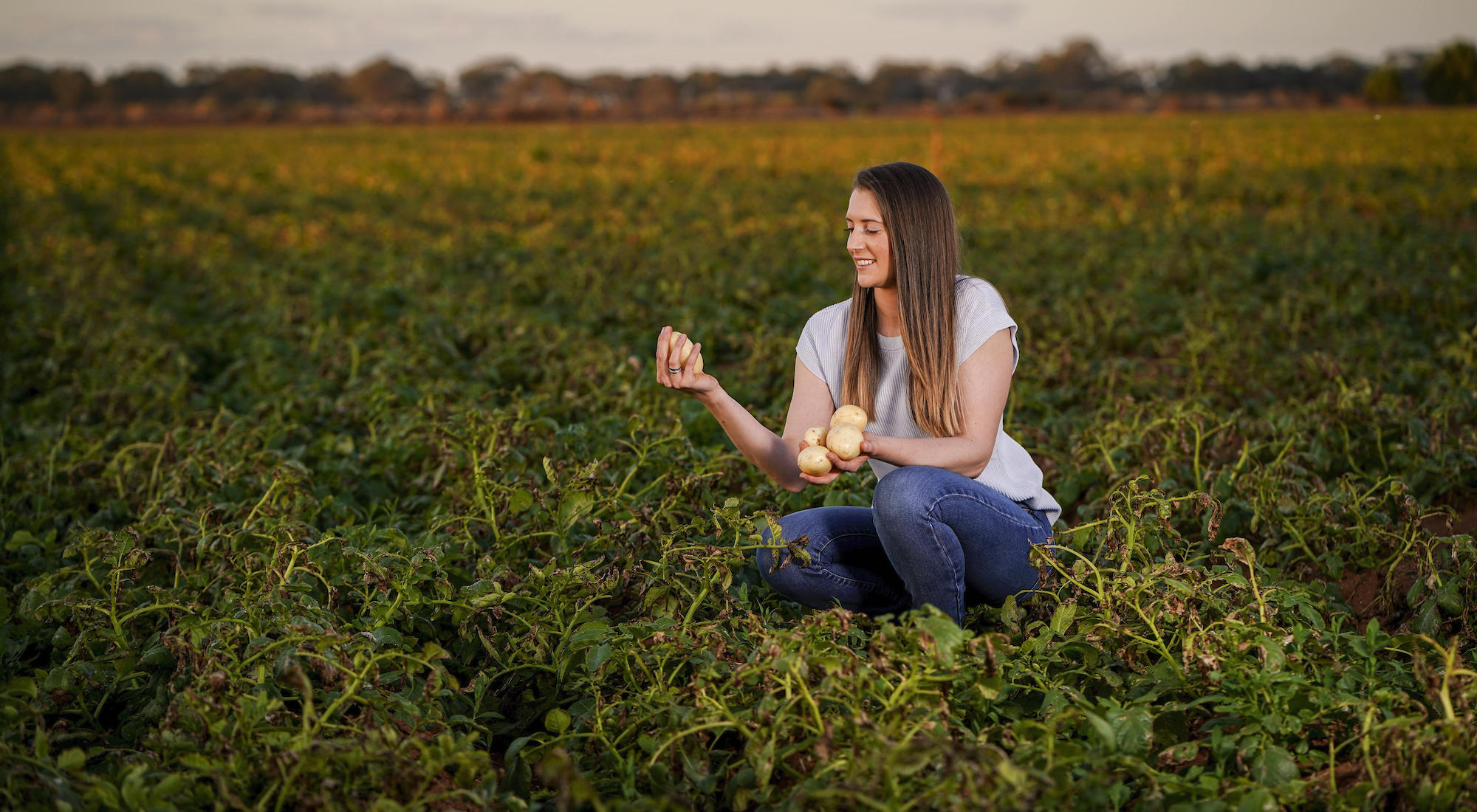
DERBY RUBBER – Wingfield
The products made by Derby Rubber have to stand the test of some of the most extreme conditions on Earth. Their ability to do so has made the family-owned company a world leader in designing and manufacturing ballast regulator broom elements.
“The product is a rubber broom element which they use essentially for sweeping rail track,” chief executive officer Michael Clayton says. “It’s the last process when they lay down fresh track or in maintaining tracks.”
Derby Rubber has been making and evolving the product, which makes up about half of its production, for more than 20 years. “It’s a product that’s striking rocks all day, with high temperatures in Australia and really cold temperatures in the northern parts of Sweden and Russia, so it needs to be really good quality,” Clayton says. “We came up with some new designs for the product and our own rubber compound for it.”
That innovation and growth have continued, with the company choosing to relocate to Wingfield, in Adelaide’s north, 16 months ago to pursue its targets. “Prior to that we were 55 years in Sydney. We made a deliberate choice to move for the growth of the business,” Clayton says. “Because a significant proportion of our business is in export and also related to mining in WA, we chose Adelaide to centralise.”
The move brought lower overheads and a better lifestyle for staff. The company also looked to take on workers moving out of the local automotive industry. “That’s really paid off because we have a really strong core team on our manufacturing shop floor,” Clayton says.
Derby Rubber now employs 15 people, with warehousing in Sydney and the Netherlands, and is working to boost its international footprint with a range of high-quality, high-performance rubber components. “We service agriculture and mining and transport,” Clayton says. “We make the door and window seals for trains and trams – we are into applications that are very demanding. We are into niche applications, where performance really matters.”
Clayton is currently eyeing defence as a natural market for components that can endure the most demanding applications. The company is also releasing a new product at the next transport trade fair InnoTrans in Berlin, but the wraps are still on. In any case, Derby Rubber knows it’s in the right place to create a positive future.
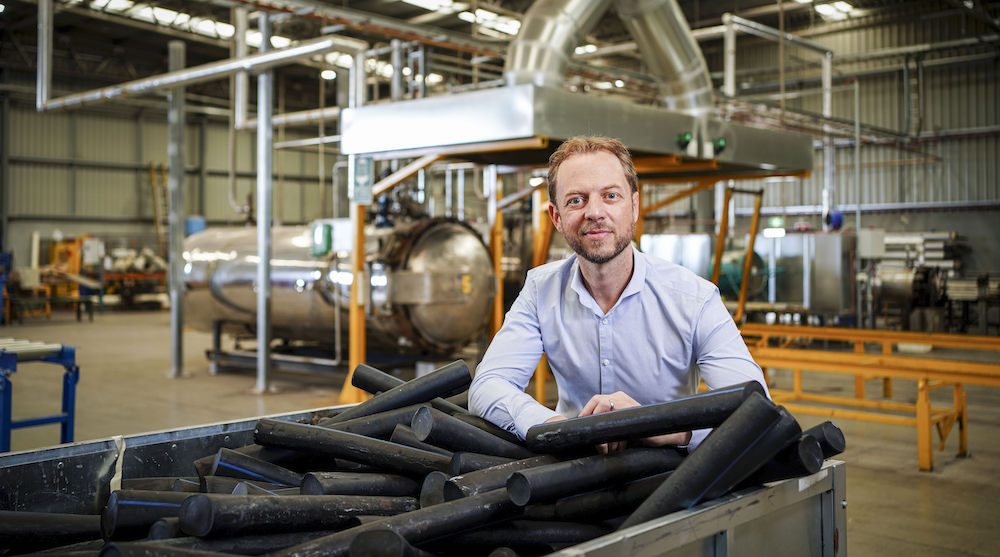
REAL ESTATE
OPENING DOORS TO A BETTER LIFE
With more affordable housing, less commuting and access to hills and beaches, more and more people are calling South Australia home
South Australia is renowned across the country for its affordability when it comes to buying property, but that doesn’t mean it lacks luxury listings or multimillion-dollar mansions. In fact, Adelaide and its surrounding regions offer plenty of palatial beachfront homes and sprawling acreage estates on par with those found in Melbourne, Sydney and Brisbane, just at a cheaper price point. While certainly enticing, it’s not just affordability luring interstate residents to the south. Less traffic congestion, quick and easy access from the beach to the hills and the city to the wine regions, distinguished schools and universities, as well as world-class restaurants and a culturally and artistically diverse arts and entertainment industry offer a lifestyle to be envied.
“We certainly represent an incredible lifestyle opportunity,” says Brett Roenfeldt, industry veteran and South Australian independent auctioneer who has conducted more than 20,000 auctions throughout his extensive career. “It’s a slightly different lifestyle – more laid back, I’d suggest. We don’t have the harbour views but the lifestyle in Adelaide means you’re within an hour’s drive from world renowned wine regions.”
It’s a lifestyle most people can afford to indulge in as well, as the cost of living and property prices are much cheaper than in the eastern states. “You could pay say $2 million for a pretty nice property here and the equivalent-type property in Sydney would be more than double that,” Roenfeldt says. “You would be getting the same sort of accommodation, the same quality fit-out, the biggest benefit of course is we’ve got the liveability of that property. We’re such good value.”
Klemich Real Estate director Matt Smith says many residents hailing from the eastern seaboard are starting to realise what they are missing out on. “In speaking to interstate buyers who are looking in Adelaide, they say, ‘You don’t know how lucky you are’,” he says. “Adelaide provides not only a fantastic lifestyle but it offers affordable accommodation. There’s very, very good value buying in Adelaide. What’s deemed to be a high-end property in South Australia would be perhaps a minimum range property in Sydney, as an example.”
Sydney’s $1 million median house price is more than double Adelaide’s, which stands at $493,000, latest realestate.com.au figures show. While not as pricey, Melbourne is still much more expensive, with a median of $745,000, while Brisbane’s $549,999 is marginally higher.
The price disparity between the four cities is more evident when comparing sales records. In 2018, when tech billionaire and Atlassian co-founder Mike Cannon Brookes bought Double Bay mansion Fairwater from the Fairfax publishing family, he not only set a record for NSW but became the first person to pay more than $100 million for an Australian house.
While only half of that, Victoria’s record stands at $52.2 million and Queensland’s at $25 million – both much higher than South Australia’s $7 million sale record.
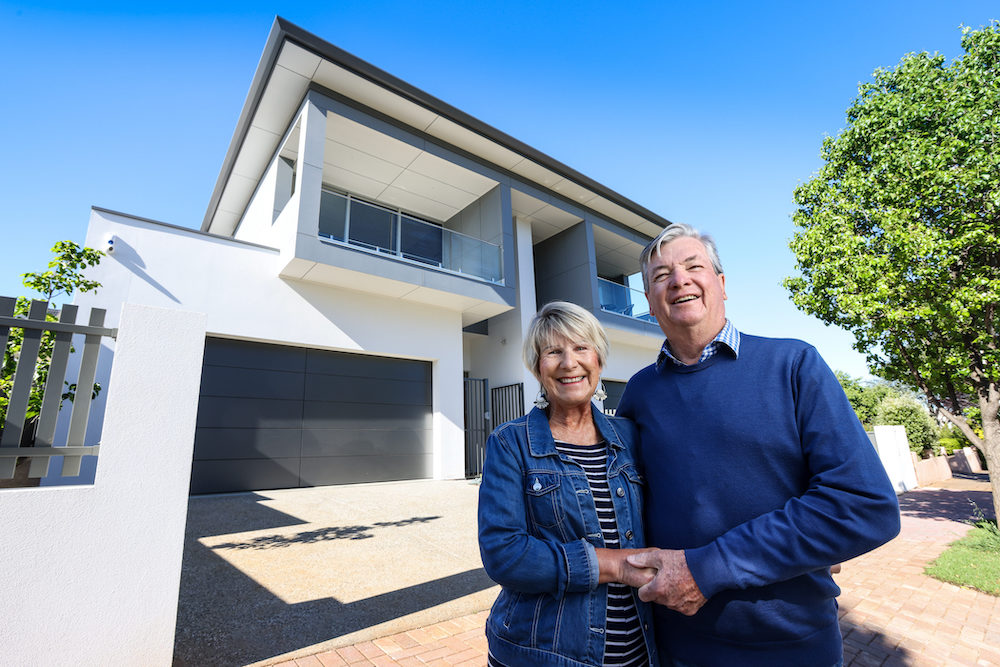
Ours is understood to be higher after prominent North Adelaide property Bishop’s Court, which was expected to fetch more than $10 million, sold in September but the price wasn’t disclosed.
Ouwens Casserly Real Estate agent Cynthia Sajkunovic sold a waterfront mansion at Henley Beach in January for $5.68 million, one of the highest sales recorded last financial year. “Locals have been quite shocked by those prices but the interstaters certainly aren’t,” she says. “They see it as really good value. For high-end properties, you certainly get greater value here than you get interstate.”
David and Maree Crichton are among those who have moved to Adelaide from interstate in recent months. They returned to Adelaide, where they lived for 10 years a few decades ago, to be reunited with family after moving to Brisbane about 20 years ago for work. Now retired, the couple want to be able to spend more time with their growing family.
“We looked at our time in life and we thought, ‘if we don’t make the move now it’s going to be too difficult’,” Ms Crichton says. “It’s been a good move for us.”
The couple bought a new four-bedroom house in St Georges for just over $1.4 million after selling their Balmoral home, which they also bought new two decades ago, for slightly less. They now have a bigger and newer house, a slightly larger block, are closer to the city and are enjoying being able to get around without getting stuck in gridlock every time they get in the car.
“It’s not nearly as congested,” Maree says. “We had to pay a little bit more than we were anticipating but we got a better deal – we realised we got a better deal after we were living in here. “We thought we’d downsize but we’ve actually upsized.
“I think the first week we were here, we really didn’t believe we were living in this house. We were a little bit surprised we got the property.”
The couple acknowledge they would have to spend much more on a larger block to be able to build a house of that size and calibre in Brisbane. These days, most of the new properties being built in the area they left are townhouses and units, so they would have had to have moved further away from the city if they wanted a new established house.
It is not just interstate residents discovering Adelaide’s great value and enviable lifestyle, though. Williams Real Estate partner Stephanie Williams has recently been helping families from Hong Kong, London and New York find properties in South Australia
“Adelaide has really got a global presence right now,” she says. “In Sydney, it’s all about the harbour views, in Adelaide it’s all about the leafy streets. With what they could buy in Sydney, they can get a beautiful house in the eastern suburbs as well as a beach house.
“We’ve got it far better here in South Australia.”